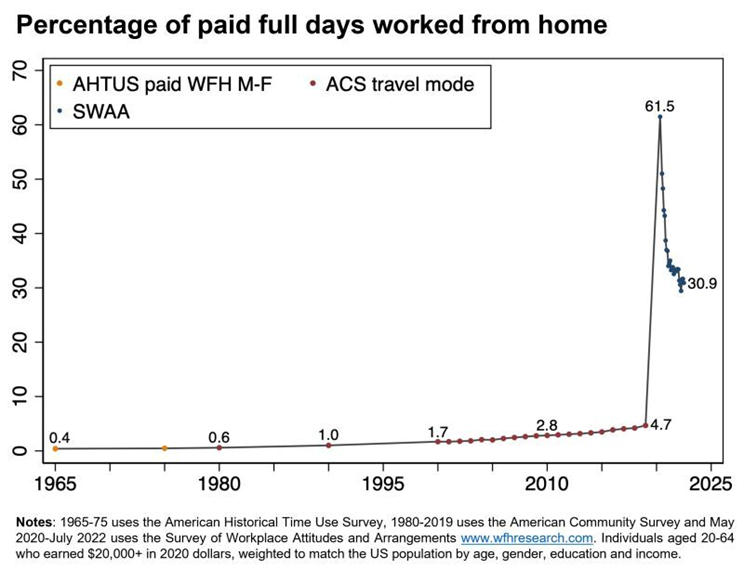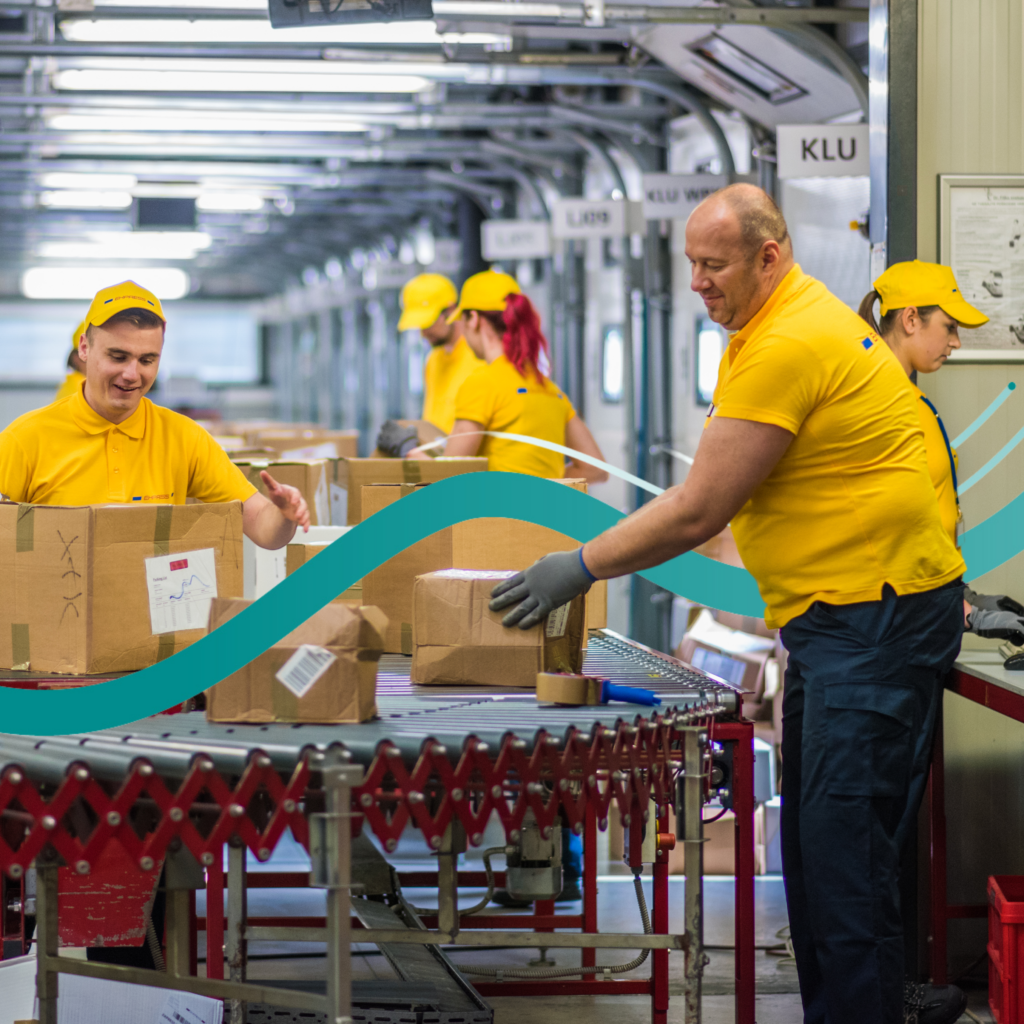The last several years have been a turbulent time for organizations, following the COVID-19 pandemic. Teams that were once in the office five days a week, suddenly shifted to working fully remote. As employees were no longer able to share information or solve problems face to face, organizations were forced to urgently adapt to a changing work environment.
As a result, a hybrid working environment is now an established practice. But some organizations are yet to implement simple, secure and sustainable digital transformation projects that support hybrid working in its entirety.
In this blog, we will discuss how a single digital transformation project can alter the hybrid working environment of an organization. This digital transformation project is mailroom automation.
Changing Work Environment
The shift to working from home was the largest shock to labor markets in decades, with a six-fold increase in paid full days worked from home recorded in 2022. This rapid acceleration brought some organizations to their knees, while others embraced change and innovated their working practices.

But why does hybrid working continue to persist in 2023? The threat of quarantine has rapidly reduced, and society continues to operate with the same capabilities as it did pre-pandemic.
Hybrid working enabled individuals who were previously unable to engage in work to access equal opportunities. People with disabilities, parents with young children and individuals who had previously retired were now provided with the flexibility they both wanted and needed in order to work.
This increased variation in the workforce led to a reshuffling of priorities amongst those currently in work and those seeking employment. Employees now desire greater work flexibility, with the large majority enjoying the work/life balance that a hybrid working environment provides. Furthermore, 47% of employees believe that working from home improved their well-being while increasing productivity.
It is also important to consider the growing rate of individuals leaving their jobs, a trend known as ‘The Great Resignation.’ 40% of employees globally say that they might leave their jobs in the near future, according to McKinsey & Company. Employees are now considering their options, whether that be going to different employers in the same industry, starting their own business, or changing career entirely.
‘The Great Resignation’ paired with a reshuffling of employee priorities has solidified hybrid working as an established practice. 74% of US companies are currently using a hybrid working model or are planning on implementing one. Among these companies would be Apple, Microsoft, and Google.
In order to support a hybrid workforce, organizations need digital solutions that are efficient, easy to use and reliable to ensure that critical business information is delivered on time and correctly.
So, whether you are just beginning your digital transformation journey, refining current digitization or striving for the next level of automation in your organization, mailroom automation is the best place to start.
When the topic of mailrooms is mentioned, the majority of the general public envision well known scenes in movies such as The Hudsucker Proxy and Elf. Imagery of a busy and chaotic physical mailroom with pigeonholes filled to the brim and letters stacked from floor to ceiling are brought to the fore.
No matter the context of these scenes, the overarching themes remain consistent. The topic of mailrooms has been tied to a slow and labor-intensive process that involves the transportation of documents in trucks, trolleys, and physical mail trays.
This imagery, while met with praise by the media, is long past its expiry date. In actuality, most mailrooms have now been automated, with physical documents being digitized upon their arrival at a scanning hub.
Mailroom automation provides efficient and secure document workflow and collaboration by digitizing all incoming mail and routing it to a single digital inbox. This digital inbox automatically sends the documents to the correct individual or team, removing the risk of human error.
Mailroom automation enables friction free document processing for businesses. A far cry from the laborious, paper ridden mailrooms of yore.
Benefits of Mailroom Automation
Mailroom automation transforms your whole organization, not just your mailroom. The digitization of documents, automatic routing, and secure document workflow that mailroom automation provides acts as a leap pad for increased productivity and growth.
The impact of mailroom automation is hard to quantify, but a few benefits of its implementation are:
Improved Customer Service: Customer demands continue to increase as automated processes become more integrated in everyday life. Processing mail manually slows down the flow of critical business information into and through your organization, delaying action that matters to your clients. Mailroom automation can improve response time, increase employee performance, and drive growth.
Enhanced Content Consolidation: Combining paper and electronic mail formats into the same document workflow will consolidate your organization’s content repositories, ensuring reliability through document flow automation.
Reduced Costs: Automating the flow of documents reduces manual interactions, such as hand-sorting and in-person delivery. Critical information is received, managed and shared in less time, helping to contain overhead and free up time to focus on revenue driving tasks.
Strengthened Resilience: As mailroom automation provides increased visibility and tracking, your organization can remain compliant with strict audit requirements. This adaptability allows your organization to be agile in the face of new privacy regulations, strengthening the backbone of your risk management strategy.
Increased Productivity of Remote Teams: Both hybrid and remote employees are able to access critical business information anytime and anywhere. Mailroom automation ensures that there is no disruption in the working day of a digital workforce.
Meet Green Goals: The goal of mailroom automation is to convert paper mail to a digital format which is easily routed, managed and shared across an organization. A reduced reliance on paper makes it easier to support your organization’s Environmental, Social and Governance (ESG) goals, while communicating a positive message to your customers.
Implementing your Mailroom Automation Project
Leading organizations leverage digital transformation solutions that better support hybrid and remote work employees, as well as implement automated workflows that give employees access to critical business information at any time. This path to digital transformation begins in the mailroom.
Start your organization’s mailroom automation journey now. Get in touch with us via the live chat on this page or through our contact options to learn more.







